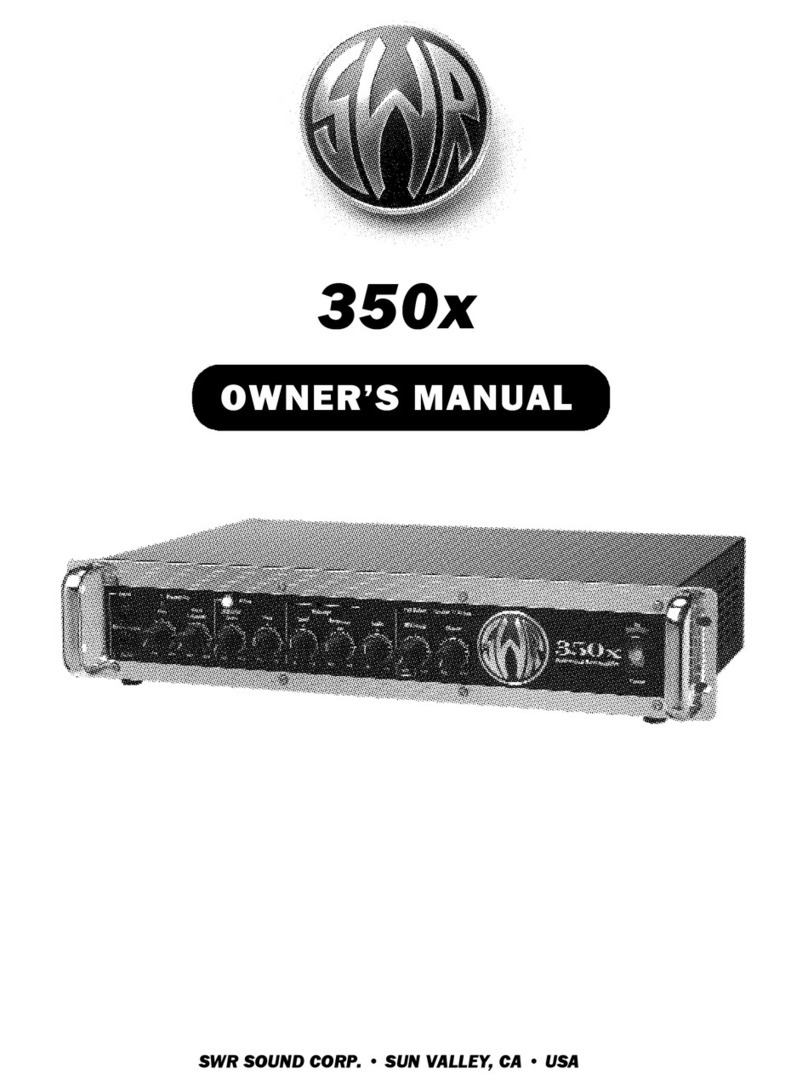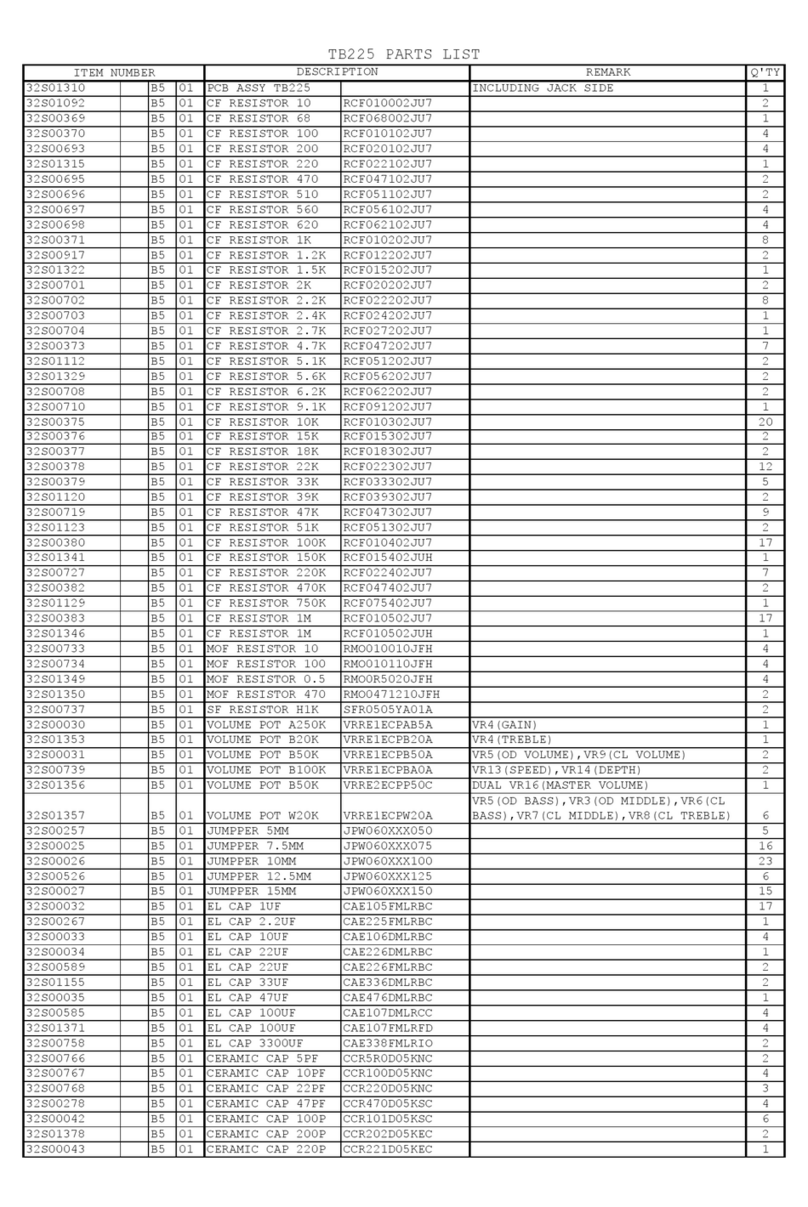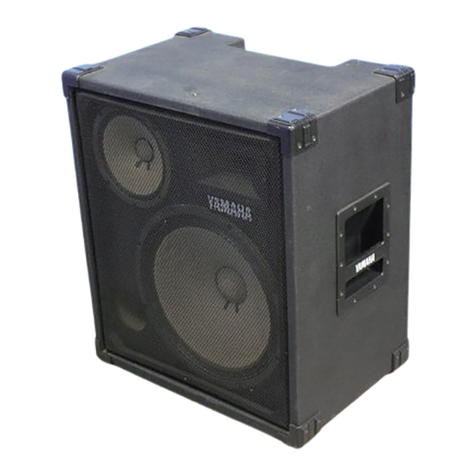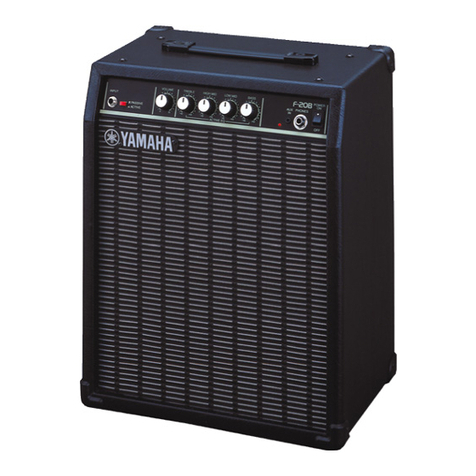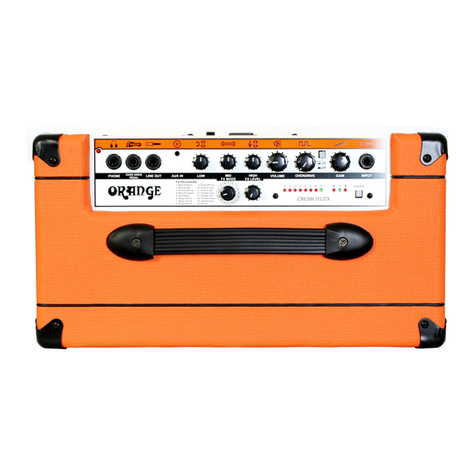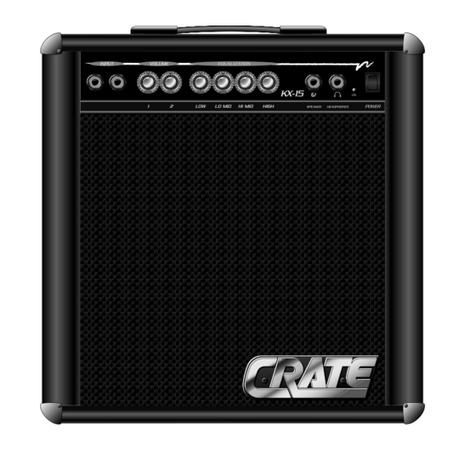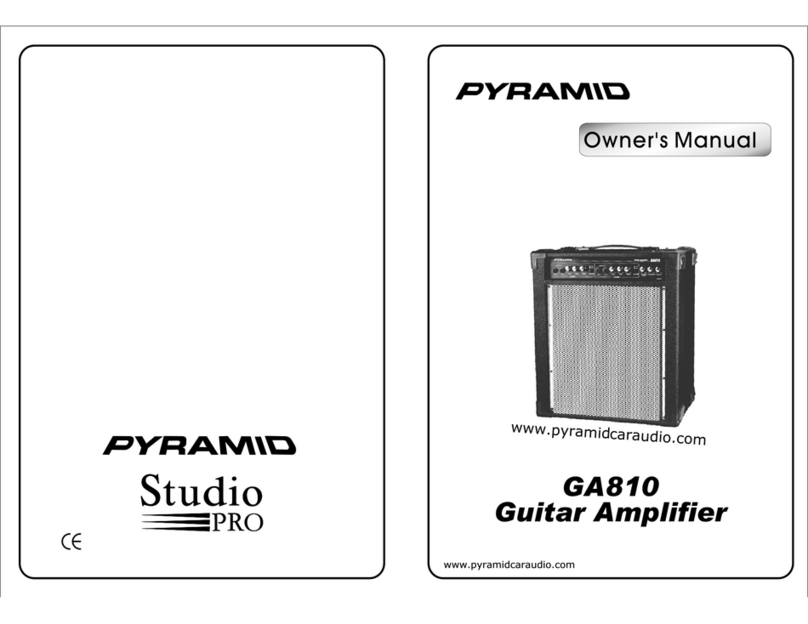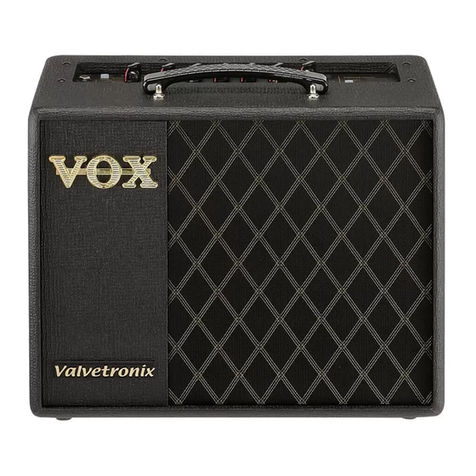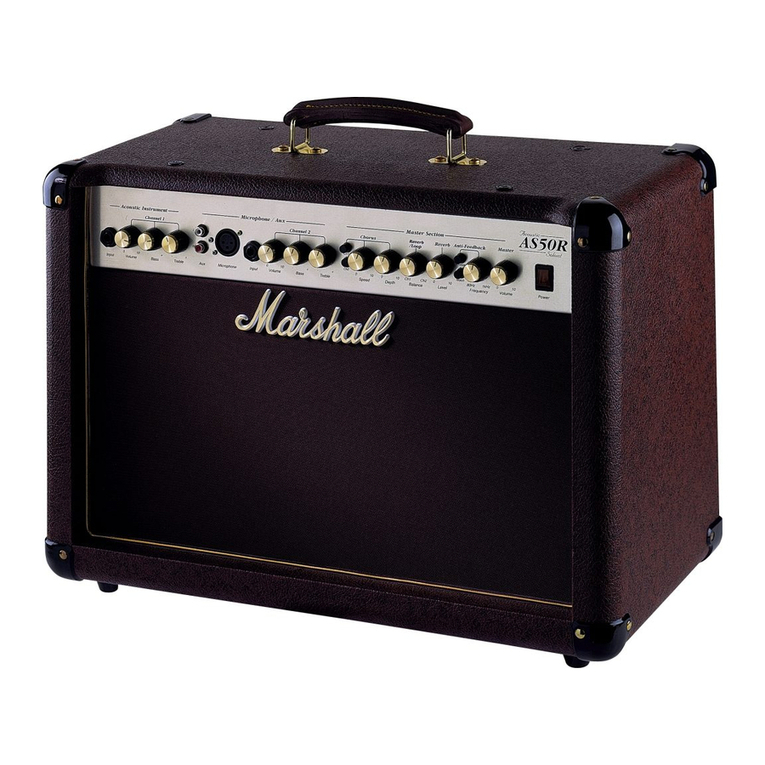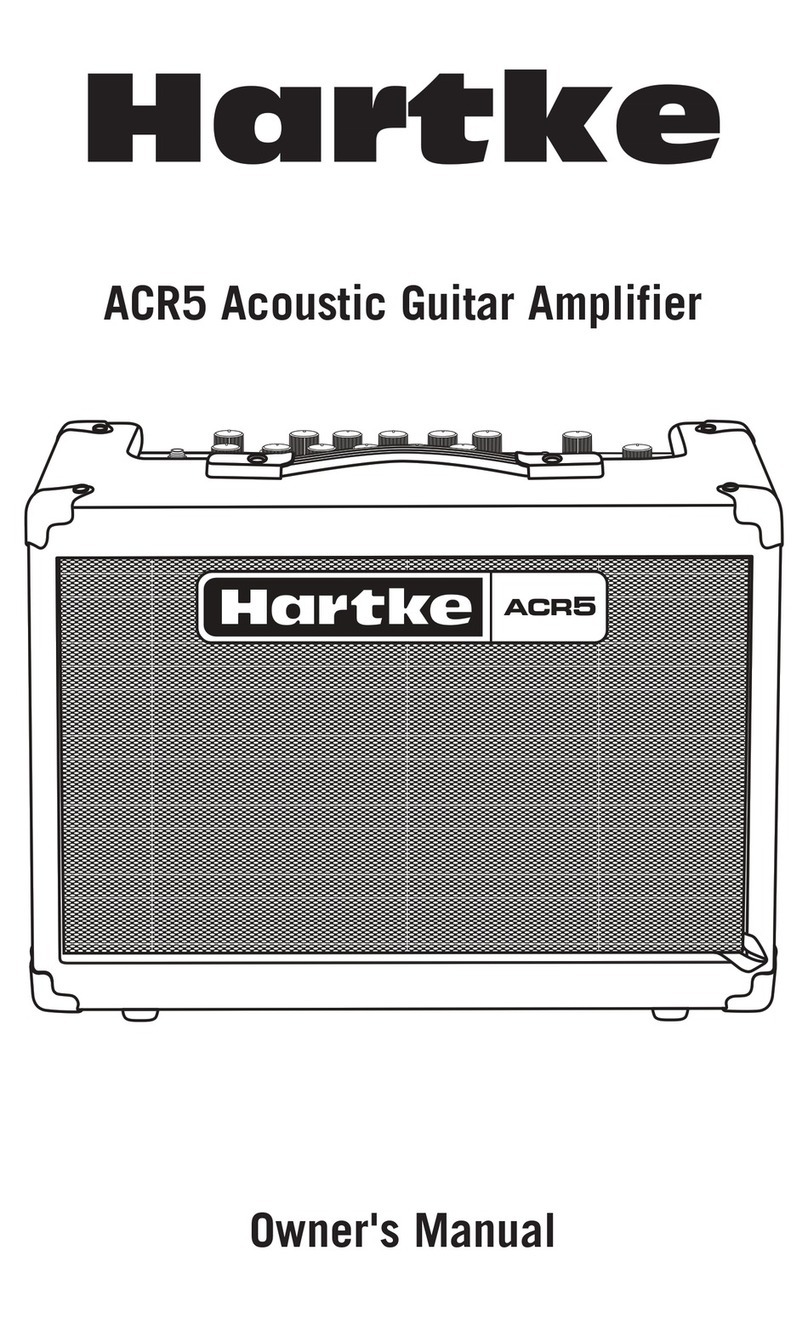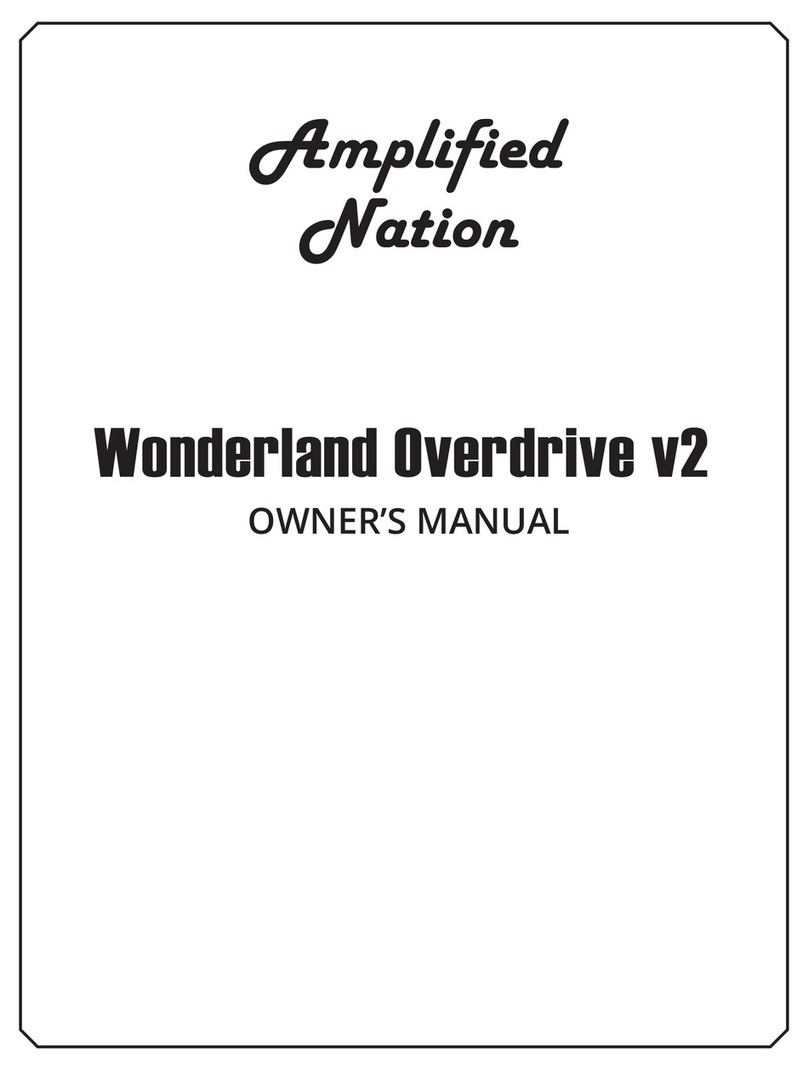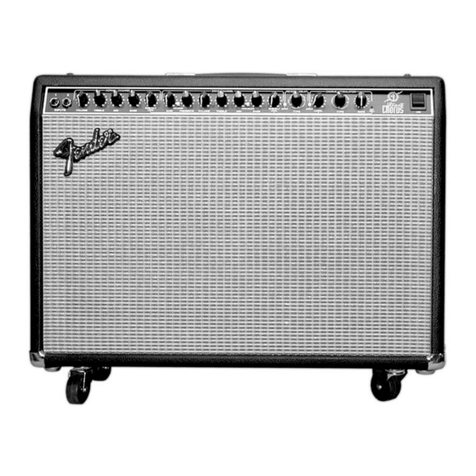SWR Super Redhead User manual

I T ’ S E A SY T O F O R G E T N O W , W H AT W I T H
the re c e n t glut of high-tech bass amps and
cabinets, but when SWR released the origi-
nal Redhead in 1988, it signaled a transition
between eras. In a sense, much of what char-
acterizes contemporary high-end bass combo
designs—high fidelity preamps with pre c i s e
signal shaping, gig-worthy power, and multi-
driver cabinets—began with the Redhead. It
quickly became the hip amp to have, and
while subsequent years found other manu-
f a c t u rers entering the increasingly compet-
itive category and diminishing the Redhead’s
dominance, the Redhead is still one of a
handful of seminal amp designs.
To bring the Redhead in line with the
S W R • D A N E L E C T R O • D R S T R I N G S • T E C H 2 1 • F U T U R E S O N I C S
S O U N D RO O M
SOUNDROOM POLICY
We test pro d ucts in real-world enviro n m e nt s, evalua t i ng them with re g a rd to price and the ma nu f a c t u rer’s de s i gn int e nt . Advertising does not influence our product
coverage. We invite manufacturers to fact-check product reviews prior to publication, and we print dissenting opinions when applicable. Street prices are approximate.
50 B A S S P L A Y E R | M A Y2 0 0 8
SW R Redhea d
B Y J O N A T H A N H E R R E R A
SWR REDHEAD
List $2,349
Street $1,650
Pros Punchy, loud, and articulate combo with
excellent connectivity and stage-to-studio
versatility
Cons A bit heavy by contemporary standards;
slick sound not for everyone
Bottom Line A classic gets refurbished, with
stellar results.
CO N TAC T
(480) 596-9690
www.swrsound.com

51
M A Y2 0 0 8 | B A S S P L A Y E R
demands of today’s player, SWR embarked on
a complete overhaul, resulting in this latest
model. While the new Redhead looks superf i-
cially similar to the old model (and its follow-
up, the Super Redhead), it’s substantially
d i ff e ren t, with a redesigned, higher- o u t p u t
power amp, tube-driven DI, Eminence drivers,
built-in compre s s o r, tuning mute, steel-
re i n f o rced cover (the old cover was just wood),
and small aesthetic updates, like the fro n t -
p a n e l ’s deeper red hue and new SWR “shield”
badge. As with the original, SWR intends the
Redhead to be an all-in-one solution for any
bassist seeking a versatile, high-powered combo.
For a few years we’ve seen a steady stream
of new lightweight amp technologies, like
neodymium speakers, Class D power amps,
and switching power supplies. It’s spoiled me,
as the Redhead felt heavier than my new wussy
tendencies were prepared for. What it loses in
the weight battle, it makes up for with a sense
of rugged solidness. The y" birch-ply cabinet,
which is glued, nailed, and dado-and-rabbet
joined, feels substantial, and the chro m e -
stamped grille is vibration free and ro b u s t l y
locked down. Overall, the Redhead’s constru c-
tion and design is well thought-out, particu-
larly the nicely placed handles and front panel,
which is angled up for better viewing and
recessed for protection. The included open
rackspace, perfect for a tuner or effects unit,
is another thoughtful feature. Unique among
similarly configured combo amps is the Red-
h e a d ’s steel-re i n f o r ced cover. When latched to
the amp, it provides thorough protection for
the speakers and front panel. Detached, it dou-
bles as a nifty tilt-up amp stand with the cast-
ers removed. The components feel tough
enough, with smooth-turning pots, good-qual-
ity jacks, and no sense of chintziness anywhere.
RA R E HA I R
For the Redhead’s rehab, SWR didn’t mess with
the original’s preamp voicing, the core of which
dates back to SWR founder Steve Rabe’s orig-
inal design. It’s a justly iconized circuit, famed
for its cleanliness, shimmering highs, slightly
scooped mids, and taut, controlled lows. The
A U R A L E N H A N C E R is another classic SWR fea-
t u r e; it’s a variable additive/subtractive EQ con-
tour that shifts emphasis as you turn the knob.
Low positions give a bass- and mid-frequency
bump while higher settings get progressively
s c o o p i e r, yielding ever more hollow, tingly
tones. The EQ is well voiced and useful; push-
pull pots on the BASS and TREBLE controls aug-
ment the basic circuit, changing the shelving
filters’ knee frequencies when engaged. There ’s
a thorough array of mutes, including a speaker
ON/OFF switch, a TUNING mute, and a mute for
the DI. The two inputs offer not only sensitiv-
ity appropriate for active or passive basses, but
The Redhead’s cover offers protection beyond
any other similar combo, plus it doubles as a
stand that can angle the combo upward.
T E C H TA L K
B Y J O N A T H A N H E R R E R A
One of the key upgrades SWR touts in its revamped Redhead
combo (see page 50) is its tube DI. We ’ re more familiar with
tubes in an amp context, but tube DIs are relatively rare .
A DI is a device designed to interface a bass (we’ll stick
to bass applications here, although DIs are used all over the
band) with a mixer or mic preamp. It converts a bass’s high-
impedance, instrument-level signal to a balanced (for noise
rejection), mic-level, low-impedance signal appropriate for a
m i x e r. A passive DI uses a transformer to achieve this con-
version, but the transformer type results in the DI having a
low input impedance—making passive DIs less than ideal for
passive basses, which like to “see” a high input impedance
for maximum fidelity. A powered or “active” component
(either a tube or transistor) buffers the DI’s input, raising its
impedance and consequentially improving a passive bass’s
tone. The active component can also color the sound consid-
e r a b l y, particularly when it adds gain. A tube DI is simply a
DI circuit that uses a tube to buffer the input (and in some
cases, add gain) while also incorporating its pleasing audio
characteristics. BP

52 B A S S P L A Y E R | M A Y2 0 0 8
d i ff e rent input impedances as well, with the
PASSIVE jack’s 1MΩrating perfect for realizing
a passive bass’s full frequency potential.
The Redhead was always a studio favorite,
and the newest model enhances this quality
further with the addition of a smooth-sound-
ing compressor and transform e r - c o u p l e d ,
o n b o a rd tube DI (see sidebar). I appreciate the
R e d h e a d ’s DI layout, putting the controls on
the front panel but leaving the XLR jack on the
rea r. The DI’s parameters are particularly ro bu st,
with LINE or DIRECT signal-flow options (LINE
incorporates the preamp and EQ, D I R E C T i s
tapped off the input stage), a G R O U N D L I F T , a
DI-specific mute (a killer feature that’s sadly
lacking on many amps—ever try to tune at a
gig when your bass is still in the house mains?),
and a PA D for ensuring proper gain staging with
a variety of re c o rding and sound-re i n f o rc e m e n t
equipment.
The new Redhead is louder than its pred-
ecessor. A lot louder. On its own, it’s hard to
imagine a gig that it wouldn’t comfortably hang
with (plus, anything bigger and there’ll be PA
reinforcement). Its tone is distinctively SWR:
rapid attack, a sense of overall dynamic con-
t r ol, an uncolored (and uncluttered) midrange,
and a snappy top. What it isn’t: buttery, thick,
s y r u p y, gooey—the colorful characteristics that
may or may not be your thing. The new driv-
ers are superb, holding tight under extreme B-
string attacks and dispersing in a pleasantly
elegant room-filling soundstage. The Redhead’s
sharp and authoritative attack, coupled with
its crisp high end, make it a particularly killin’
slap amp. The cool compre s s o r, inherited fro m
SW R’s flagship SM1500 (and the soon-to-arr i v e
Marcus Miller preamp), enhances this facet of
the Redhead’s personality, adding evenness and
p r esence without offensive coloration. The DI
p e r f o rme d well in a computer- r e c o r ding envi-
ronment, adding a bit of burnished color lack-
ing in the live signal, due largely to the
h a rmonic characteristics of its tube and trans-
former components.
The new Redhead is more of what it’s
always been: a high-quality, pristine-sound-
ing, pro-level amp for those who prefer clar-
ity and crackle to mud and crunch. In
upgrading the power, speakers, and feature
set, SWR successfully took the combo into the
21st century, and so the Redhead is back in
contention as a titillating bass-gear pin-up,
w o rth the price of admission. BP
T E C H S P E CS
Input impedance ACTIVE, 130kΩ; PASSIVE, 1MΩ
Tone controls BASS: ±15dB @ 70Hz
(shelving), w/TURBO engaged: ±15dB @
30Hz; MID RANGE: ±15dB @ 200Hz–800Hz
(semi-parametric); TREBLE: ±15dB @ 2kHz
(shelving), w/TRANSPARENCY engaged:
±15dB @ 4kHz
DI output Tube-driven, transformer-coupled
balanced XLR with MUTE, LINE/DIRECT, and
PAD controls
Power amp topology Class AB
Power output 400 watts into internal
cabinet; 600 watts with 4Ωextension
Cabinet type 2x10 + horn
Speaker manufacturer Custom-designed
Eminence drivers with Foster horn
Weight 80 lbs
Made in U.S.A. (some parts manufactured
in Mexico)
Warranty Five years
Other manuals for Super Redhead
3
This manual suits for next models
1
Other SWR Musical Instrument Amplifier manuals

SWR
SWR WORKINGMAN'S 10 User manual
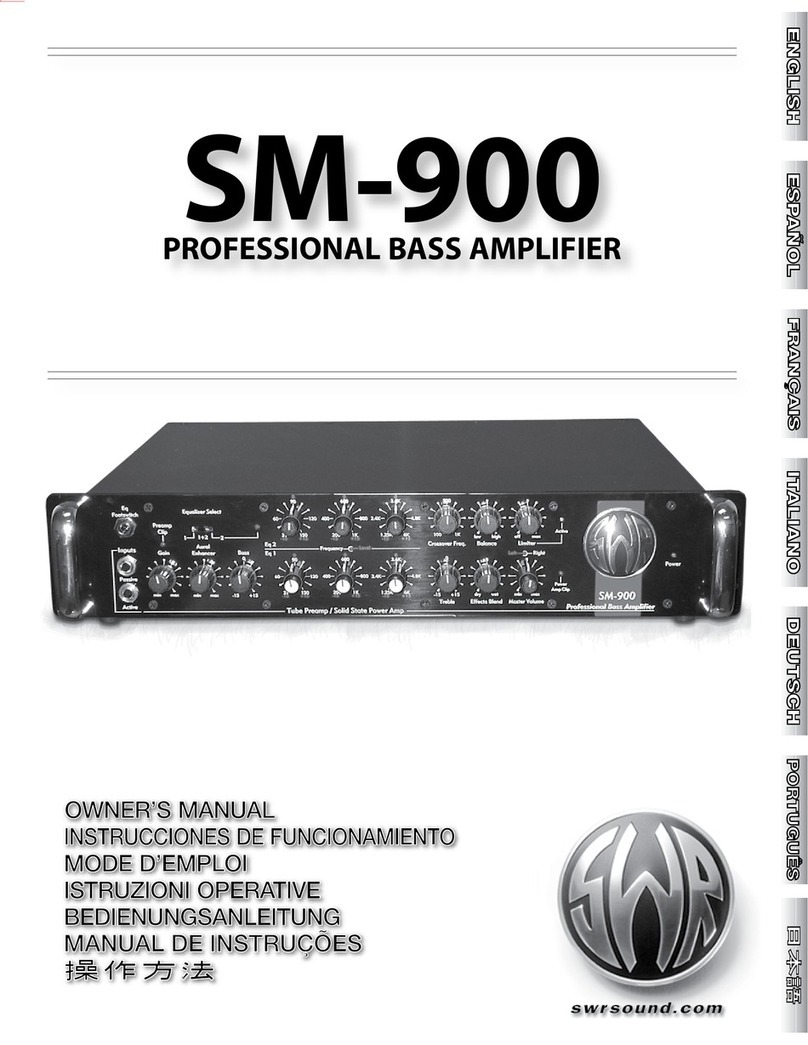
SWR
SWR SM-900 User manual
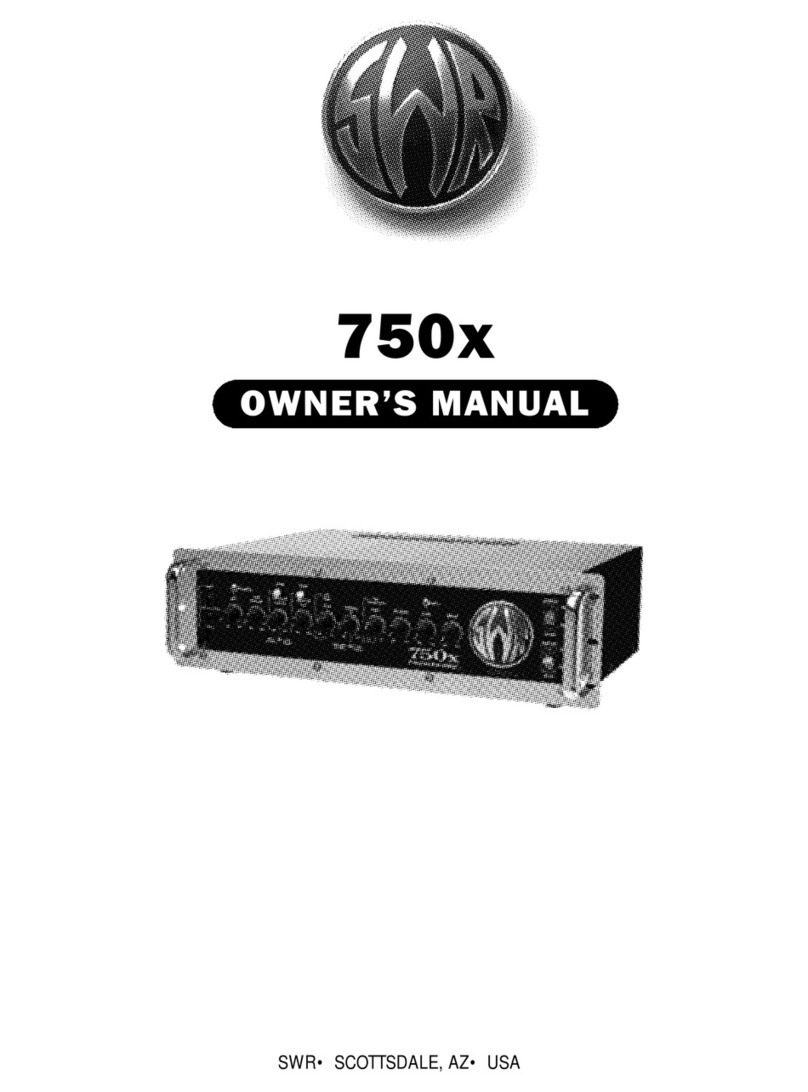
SWR
SWR 750x Bass Amplifier 750x User manual
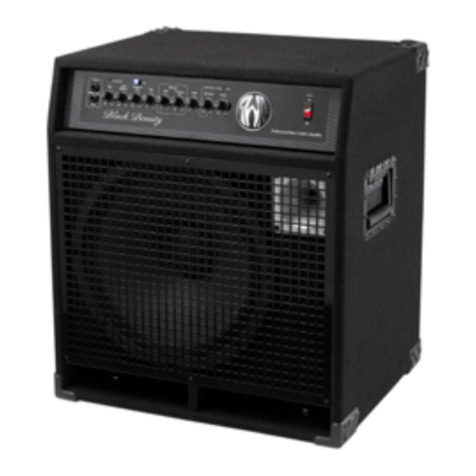
SWR
SWR Bass Combo Amplifier User manual
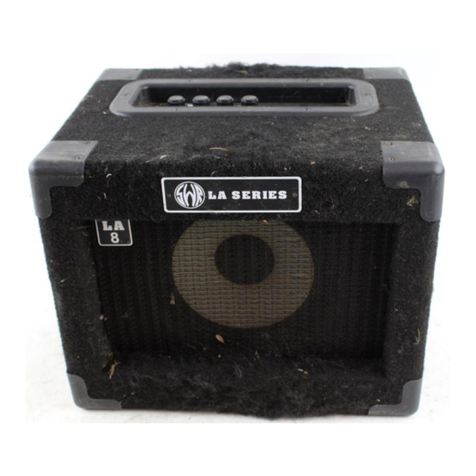
SWR
SWR LA 15 User manual

SWR
SWR Black Beauty User manual
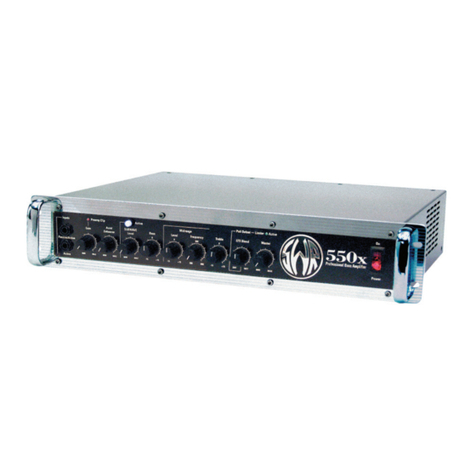
SWR
SWR 550x User manual

SWR
SWR SM-900 User manual
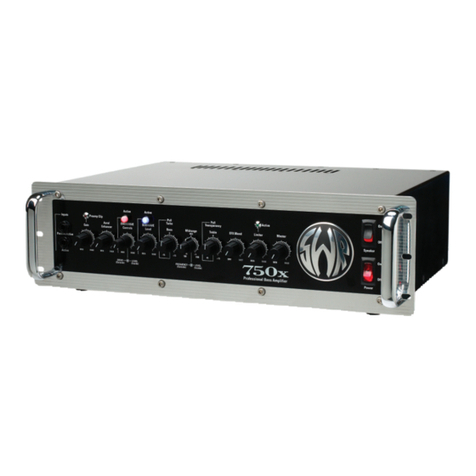
SWR
SWR 750x Bass Amplifier 750x User manual

SWR
SWR WorkingPro Series User manual
